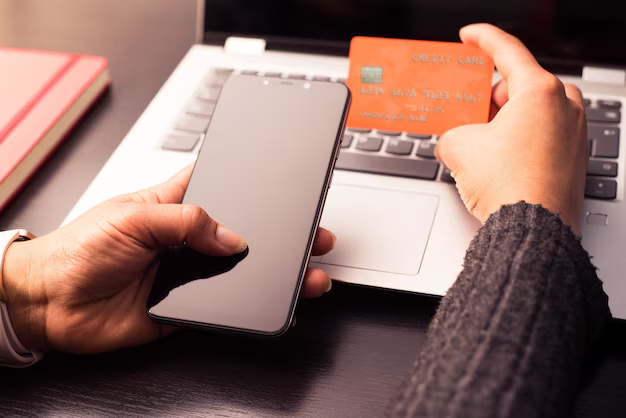How to Use a Credit Card to Get a Money Order: What You Need to Know
Imagine you’re caught short of cash but need to pay your rent or a utility bill using a money order. Can you whip out your credit card and solve the problem? Now, that’s an essential question for many who rely on the convenience of credit cards but need the financial flexibility money orders provide. Let’s dive deep into the intricacies of purchasing a money order with a credit card, weighing pros, cons, and best practices.
What Is a Money Order?
A money order is a payment document issued by a bank or financial service that enables the specified value to be transferred to the recipient much like a check. It's often used when checks or online payments aren’t convenient or accepted, offering a certified payment method that’s more secure than cash.
Why Use a Money Order?
- Security: Provides a safe, traceable form of payment, essential for transactions needing a paper trail.
- Convenience: Some services and establishments require money orders for payments, adding necessity to their usage.
- Cash Limitation: For those without access to checks or electronic payments, money orders provide an alternative.
Can You Buy a Money Order with a Credit Card?
The simple answer is yes, but it’s not straightforward. While theoretically possible, numerous hurdles and costs are involved, as the acceptance of credit cards for money orders is restricted.
Understanding the Restrictions
- Limited Acceptance: Major retailers and money transfer services often do not allow credit card payments for money orders due to the fee structures involved.
- Higher Costs: Credit card purchases are treated as cash advances, often incurring hefty fees and higher interest rates.
- Credit Utilization: This purchasing method affects your credit utilization ratio, crucial for maintaining a healthy credit score.
Exploring Where to Get Money Orders with a Credit Card
Before you decide if purchasing a money order with a credit card is worth it, let's explore where it might be feasible:
Big Retailers
Places like Walmart and many grocery chains issue money orders but generally accept only cash or debit cards. Discovering a retailer accepting credit cards for this purpose can be elusive.
Financial Services
While banks and financial institutions provide money order services, they typically do not accept credit cards. It's crucial to verify with your local branch for any possible exceptions.
Online Platforms
Some online payment platforms facilitate this process by allowing financial transfers from credit cards, but they often charge a substantial premium for this convenience.
Fees and Costs Associated
Purchasing a money order using a credit card involves several financial implications:
Cash Advance Fees
When purchasing a money order, the card is treated as if withdrawing cash—subject to cash advance fees, typically a percentage of the order.
Higher Interest Rates
Credit card companies typically apply a higher interest rate on cash advances, escalating your cost compared to regular transactions.
Immediate Interest
Unlike other purchases, cash advances don’t offer interest-free grace periods. The interest starts accruing immediately upon transaction.
Point Limitation
While credit cards usually offer reward points or cash back, cash advances usually do not earn such benefits, minimizing potential rewards.
Alternatives to Consider
If the costs and complexity deter you from using a credit card to procure a money order, consider these alternatives:
Debit Cards
Using a debit card eliminates the cash advance fees and high interest rates associated with credit cards.
Personal Checks
If a personal check is acceptable, it can be a more straightforward and cost-effective solution.
Online Payment Services
Utilize online banking or payment services requiring direct transfers. They often provide a traceable and secure payment option without extra interest or fees.
Prepaid Cards
Certain prepaid debit cards can act similar to a credit card but without massive fees and costs when used for money orders.
Key Takeaways
To simplify and clarify the information, here's a handy summary of when using a credit card for a money order might make sense and what to remember if you decide to use one:
- 🛍️ Retailers: Rarely accept credit cards for money orders; check specific policies.
- 💳 Cash Advances: Expect high fees and immediate interest—use sparingly.
- 📊 Credit Impact: Cash advances affect credit utilization and may harm your score.
- 🔄 Alternatives: Explore debit cards, checks, or online payments first.
- 💲 Costs: Be aware of additional fees and higher interest on advances.
Making Informed Financial Decisions
While the allure of convenience may tempt you to use a credit card to purchase a money order, weighing the pros against the cons is crucial. It often isn't cost-effective due to cash advance penalties and higher interest rates. Exploring alternative payment methods saves money and helps maintain a better credit standing.
Ultimately, understanding your options and knowing the financial implications aids in making sound, informed decisions. Whether for personal transactions or to bridge a financial gap temporarily, being equipped with the right knowledge transforms complex financial decisions into manageable ones.

Related Topics
- a Credit Card
- Am Eagle Credit Card
- Are Airline Credit Cards Worth It
- Are Credit Card Points Taxable
- Are Credit Card Rewards Taxable
- Can a Credit Card Company Sue You
- Can a Debit Card Be Used As a Credit Card
- Can a Money Order Be Paid With a Credit Card
- Can a Secured Credit Card Build Credit
- Can Credit Card Companies Garnish Your Wages